
Bryn Mawr, from Welsh for 'big hill', is a census-designated place (CDP) located across three townships: Radnor Township and Haverford Township in Delaware County, and Lower Merion Township in Montgomery County, Pennsylvania, United States. It is located just west of Philadelphia along Lancaster Avenue, also known as U.S. Route 30.

Haverford College is a private liberal arts college that is located in Haverford, Pennsylvania. It was founded as a men's college in 1833 by members of the Religious Society of Friends (Quakers), and began accepting non-Quakers in 1849. It then became coeducational in 1980.

Bryn Mawr College is a women's liberal arts college in Bryn Mawr, Pennsylvania. Founded as a Quaker institution in 1885, Bryn Mawr is one of the Seven Sister colleges, a group of historically women's colleges in the United States, and the Tri-College Consortium along with Haverford College and Swarthmore College. It is one of 15 Quaker colleges in the United States. The college has an enrollment of about 1,350 undergraduate students and 450 graduate students. It was the first women's college to offer graduate education through a PhD.

Temple University is a public state-related research university in Philadelphia, Pennsylvania. It was founded in 1884 by the Baptist minister Russell Conwell and his congregation Grace Baptist Church of Philadelphia then called Baptist Temple. On May 12, 1888, it was renamed the Temple College of Philadelphia. By 1907, the institution revised its institutional status and was incorporated as a research university.
The Seven Sisters are a group of seven liberal arts colleges in the Northeastern United States that are historically women's colleges: Barnard College, Bryn Mawr College, Mount Holyoke College, Smith College, and Wellesley College are still women's colleges. Vassar College is currently a coeducational college and Radcliffe College was absorbed in 1999 by Harvard College.

Saint Joseph's University is a private Jesuit university in Philadelphia and Lower Merion, Pennsylvania. The university was founded by the Society of Jesus in 1851 as Saint Joseph's College. Saint Joseph's is the seventh oldest Jesuit university in the United States and the fourth largest university in Philadelphia. It is named after Saint Joseph.

The State University of New York at Canton is a public college in Canton, New York. It is part of the State University of New York. The college offers 31 bachelor's degrees, 20 associate degrees, three one-year certificate programs, and 23 online degrees.

Midwestern University (MWU) is a private medical and professional school with campuses in Downers Grove, Illinois and Glendale, Arizona. As of the 2020–21 academic year, a total of 2,987 students were enrolled at the Downers Grove campus and 3,902 were enrolled at the Glendale campus.

Martha Carey Thomas was an American educator, suffragist, and linguist. She was the second president of Bryn Mawr College, a women's liberal arts college in Bryn Mawr, Pennsylvania.
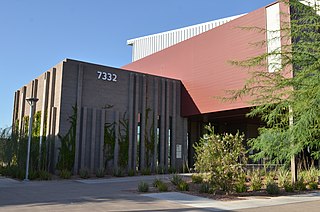
Arizona State University Polytechnic Campus is a public university in Mesa, Arizona. It is one of five campuses of Arizona State University. Founded as ASU East, the campus opened in fall 1996 on the former Williams Air Force Base in southeast Mesa.
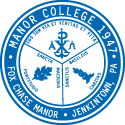
Manor College is a private Catholic college in Jenkintown, Pennsylvania. It offers associate and bachelor's degrees and is best known for its veterinary technician and dental hygiene programs. To give students a hands-on learning experience, the college is home to both a Dental Health Center that serves the local community and a 50 acre farm and fully operational on-campus veterinary laboratories.
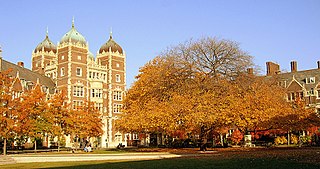
Cope and Stewardson (1885–1912) was a Philadelphia architecture firm founded by Walter Cope and John Stewardson, and best known for its Collegiate Gothic building and campus designs. Cope and Stewardson established the firm in 1885, and were joined by John's brother Emlyn in 1887. It went on to become one of the most influential and prolific firms of the late-nineteenth and early-twentieth centuries. They made formative additions to the campuses of Bryn Mawr College, Princeton University, the University of Pennsylvania, and Washington University in St. Louis. They also designed nine cottages and an administrative building at the Sleighton School, which showed their adaptability to other styles, because their buildings here were Colonial Revival with Federal influences. In 1912, the firm was succeeded by Stewardson and Page formed by Emlyn Stewardson and George Bispham Page.

Margaret Ayer Barnes was an American playwright, novelist, and short-story writer. She was awarded the Pulitzer Prize.
Bryn Mawr School, founded in 1885 as the first college-preparatory school for girls in the United States, is an independent, nonsectarian all-girls school for grades PK-12, with a coed preschool. Bryn Mawr School is located in the Roland Park community of Baltimore, Maryland, United States at 109 W. Melrose Avenue, Baltimore MD 21210.

Rosemont College is a private Catholic university in Rosemont, Pennsylvania. Founded in 1921 as a women's college by the Sisters of the Holy Child Jesus, the undergraduate program opened to male students beginning in fall 2009. The university is accredited by the Middle States Commission on Higher Education (MSCHE). Rosemont also offers a range of master's degrees through its school of graduate studies and school of professional studies.
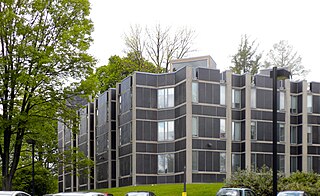
The Quaker Consortium is an arrangement among three liberal arts colleges, Bryn Mawr College, Haverford College, and Swarthmore College, and one research university, the University of Pennsylvania, all located in the greater Philadelphia area. The arrangement allows for their students to enroll in courses at the other schools of the Consortium.
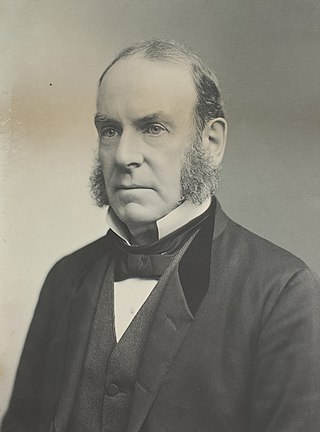
James Evans Rhoads (1828—1895) from Marple Township, Delaware County, Pennsylvania was an American educator and administrator, president of Bryn Mawr College.
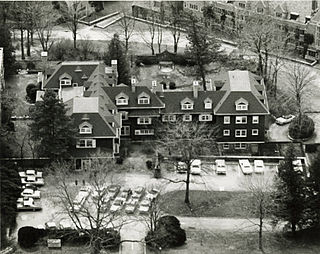
The Bryn Mawr College Deanery was the campus residence of the first Dean and second President of Bryn Mawr College, Martha Carey Thomas, who maintained a home there from 1885 to 1933. Under the direction of Thomas, the Deanery was greatly enlarged and lavishly decorated for entertaining the college's important guests, students, and alumnae, as well as Thomas’ own immediate family and friends. From its origins as a modest five room Victorian cottage, the Deanery grew into a sprawling forty-six room mansion which included design features from several notable 19th and 20th century artists. The interior was elaborately decorated with the assistance of the American artist Lockwood de Forest and Louis Comfort Tiffany, de Forest's partner in the design firm Tiffany & de Forest, supplied a number of light fixtures of Tiffany glass. De Forest's design of the Deanery's so-called 'Blue Room' is particularly important as it is often considered one of the best American examples of an Aesthetic Movement interior, alongside the Peacock Room by James Abbott McNeill Whistler. In addition, John Charles Olmsted, of the Olmsted Brothers landscape design firm, designed a garden adjacent to the Deanery, which also contained imported works of art from Syria, China, and Italy. The Deanery's beauty and rich history established the Deanery as a cherished space on campus and an icon of Bryn Mawr College.
Edith Hayward Hall Dohan (1877–1943) was an American archaeologist who earned Bryn Mawr College's first classical archaeology Ph.D. Hall was part of an excavation team with Harriet Boyd in her early career that most notably brought the first Mycenaean and pre-Mycenaean collection to be displayed in America. Hall later wrote The Decorative Art of Cretein the Bronze Age, which was published in 1906 that breaks down the evolution of the art and pottery in Crete from the Bronze Age.


















